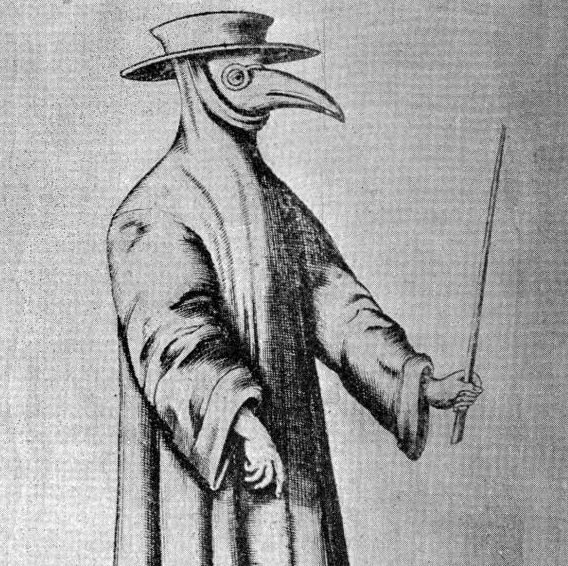The History of Pandemics: Part Two

This is a drawing of a medieval plague doctor that would treat The Black Death.
May 7, 2021
In the last edition we focused on some Ancient and Classical pandemics. In this edition we will being look at some later Pandemics in history during the Medieval times.
Leprosy in the Middle Ages- 11th to 14th Century AD
Leprosy has been around throughout much of history and it has taken millions of lives. From the 11th to 14h century it was particularly dangerous and it spread a lot. The Leprosy pandemic during the Medieval Era consisted mostly in England but also lasted throughout much of Europe. During the time, there were over 320 hospitals/religious houses where Lepers (people with Leprosy) were kept and taken care of. Leprosy was often viewed in a religious way and people believed that it was “purgatory on earth.” In the areas with Leprosy, it is predicted that around a quarter of adults had it and most died or were crippled from it.
The Black Death- 1350 AD
Another pandemic during the middle ages was The Black Death. The pandemic was caused by the disease, The Bubonic Plague. It was spread by rats and small insects and soon infected most of Europe. This was the most deadly Pandemic ever and killed one-third of Europe’s population at the time which totals from about 25-50 million people. At the time, most nations and groups in Europe tried to work together to end the plague. Multiple wars ended because the countries were facing so many problems and deaths from The Black Death.
The Columbian Exchange Pandemics- 1492
Most people know the year 1492 because that was when Columbus sailed to the Americas. What most people don’t know is that it caused brutal pandemics that killed thousands of natives. The Columbian Exchange consisted of multiple diseases such as Smallpox, the Bubonic Plague, and Measles. When Columbus and his man travelled to the islands and interacted with the natives they unintentionally gave them these diseases. Because the natives of America had never been exposed to most of the diseases before they had no immunity; this led to a high contraction rate and death rate. The Columbian Exchange is actually known for contributing to the Aztec Empire. The pandemics that hit the Native Americans in addition to later factors made it difficult for most of their populations to recover.
The Great Plague of London- 1665
The Bubonic Plague struck again in London in 1665 causing the Great Plague of London. This pandemic killed nearly 20% of London’s population at the time which was around 100,000 people. The disease was spread by rats and fleas but the people at the time believed that house pets caused it. Due to this, the people slaughtered over 200,000 different house pets because to try to prevent the disease from spreading any more. The people of London had a lot of hardships at the time because The Great Fire of London happened only around a year later.
In the next and final part of The History of Pandemics we will look at Pandemics in the 19th, 20th, and 21st century.













